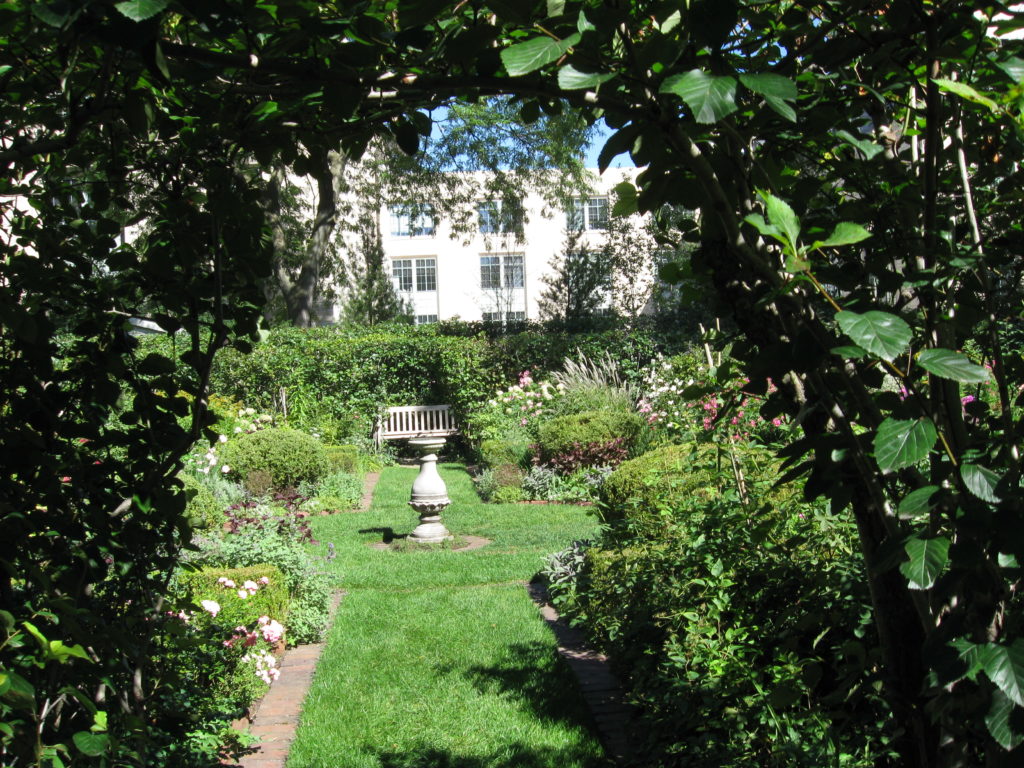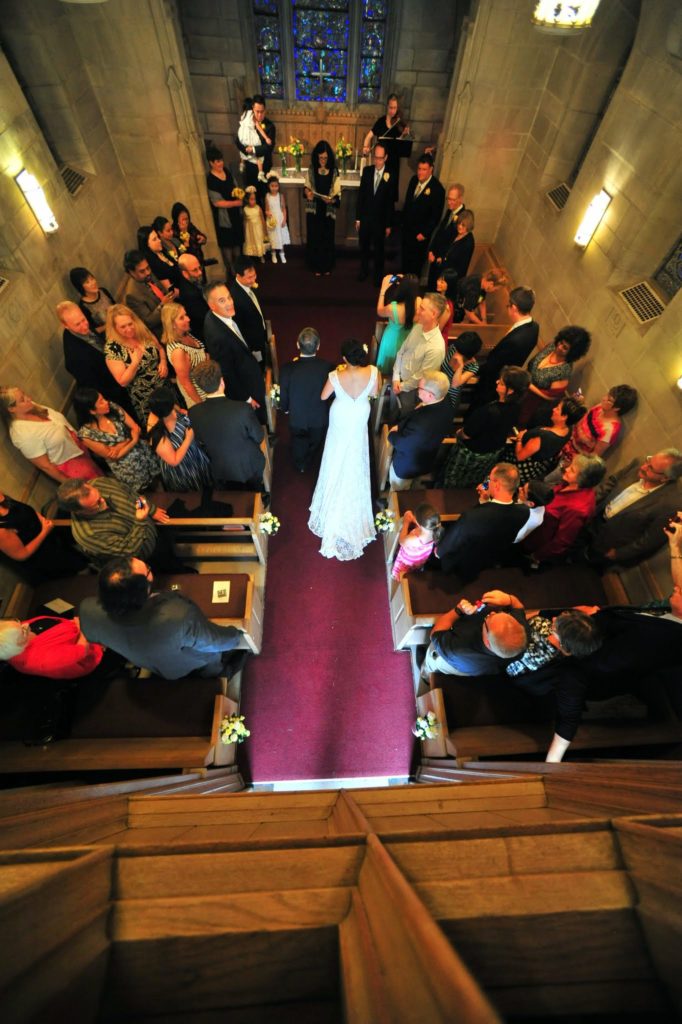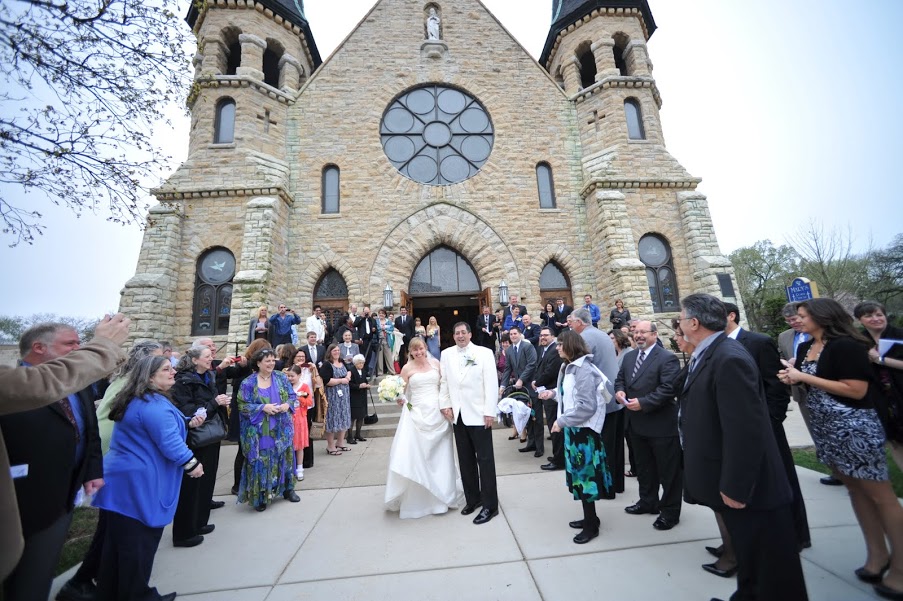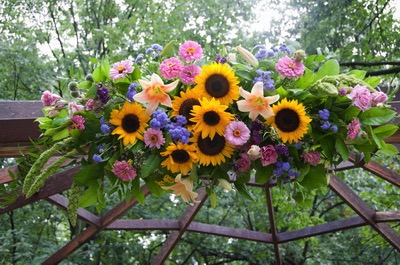Jul 30, 2018 | vendors
I was toodling around my home town of Evanston recently and suddenly realized (and I’m giving away my age here) that I’ve been associated with this pleasant burg for 50 years as of this summer. I grew up here, and now I live–and often work–in the one and only Evanston, Illinois.
And I love working on weddings in Evanston. I’ve had the privilege to work on many, and I hope there will be many more. (I know I have one coming up in a few weeks, and I’m very excited!)
Because I’ve been around for a while, I know my way around this town pretty well, and I know a lot of the wedding (and party) resources available. So, I’m going to showcase some of the many people and organizations and places that can help to make any wedding special right here in my home town.
Today, I’ll talk about venues. In the weeks to come, I’ll focus on other vendors you may or may not have heard of. And, I assure you, there are many more places and people in this town that I don’t have room to showcase!
Let’s start with hotels. The grande dame of Evanston hotels is surely the Hilton Orrington. This hotel was built in the 1920s and has been updated many times. But it has never lost its vintage charm. A much more modern hotel is the Hilton Garden Inn, around the corner from the Orrington. I have not worked at the Garden Inn, but I’ve been in it, and it seems to have all the amenities you would expect from a hotel.
There are also a couple of venues that fall into the category of “vintage home or club.” The first is the venerable Woman’s Club of Evanston. Their vintage clubhouse is located very conveniently downtown and has both an impressive second-floor ballroom and some smaller rooms (equally charming) on the first floor. A little south of downtown Evanston is the Charles Gates Dawes House/Evanston History Center. While this is mainly a history museum, it is suitable for small gatherings, especially if you love well-maintained historic houses.

A view of the lovely Shakespeare Garden.
I know of two lovely gardens where wedding ceremonies are permitted. Both have the drawback of not permitting the use of either chairs or tents, but are certainly worth looking at. My personal favorite is the Shakespeare Garden on the Northwestern Campus. Another option is the Merrick Rose Garden, owned by the city.

The interior of charming Howe’s Chapel. (Photo by Peter Coombs Photography.)
Some less well known spaces include the Halim Time and Glass Museum, one of the newest venues in the city; the Evanston Art Center in north Evanston; and the Crystal Ballroom. Howe’s Chapel (very near the Shakespeare Garden and often used as a back-up location in case of inclement weather) is another little-known space.
Finally, if you’re looking for less expensive or less formal locations, the City of Evanston and its park district own and operate a number of buildings that are available for event rentals.

Historic St. Mary’s church is only one of many in downtown Evanston. (Photo by Peter Coombs Photography.)
And really, I’m just scratching the surface here. Northwestern University has some venues, although mainly they only rent to people who have an affiliation with the university. Garrett Theological Seminary has a second chapel, in addition to Howe’s Chapel, mentioned above. And there are many, many smaller spaces and public parks that are suitable for various functions. We have historic buildings and modern construction. That’s not even mentioning the plethora of churches and synagogues in town. In short, there is something for everyone. And that’s just one of the reasons why I love Evanston!
Jul 23, 2018 | wedding planning
This is part three of this series on budget party planning. Here’s an in-depth look at budgeting for the food at your event:

Photo courtesy of Artisan Events, Inc.
One very important thing you can do to control your catering costs is to have a fairly firm budget number in mind before you talk to a caterer. Every client I have ever told this to says, “But I don’t know what it costs.” That’s the secret: You tell the caterer how much you want to spend and it is up to them to come up with a menu within your budget. Don’t expect caviar on a frugal budget, of course, and do discuss your target budget number with any potential caterer. A good one will be able to tell you if what you are asking for is even reasonable. If you don’t go in with a budget number, they will start at the high end. You can make adjustments as you go along, of course, but it is easiest to start with your budget amount.
One way to think about your catering budget is to break it down into two (or three parts). First, consider how much per person you want to spend on food alone. Compare your per person price to what you might pay in a restaurant. At a highest-end restaurant, you could easily spend $100 per person for dinner, or more. But at a high quality neighborhood restaurant, you can get away with $40 per person. Of course, the prices at a restaurant also include a different kind of overhead from the caterer, but this gives you a way to start thinking about the costs. Float a per-person number with any caterer you talk to and see if they think they can come up with a menu in that price range. If three or four caterers find your numbers too low, you may have to increase them. But you should be able to find someone to work within any reasonable budget.
The second part of your catering budget is service–what you are paying for the chef, servers, and other kitchen workers. Most caterers charge service per worker per hour, and they will break this number down on your estimate. A less scrupulous practice is to charge service at a flat cost per guest. This method does not reflect the caterer’s actual expenses and may end up costing you more. A third method is to charge service as a percentage of food costs. If a caterer insists on charging a flat rate per guest and won’t give you actual service costs, consider looking elsewhere, unless you find that they actually have the best price.
If you want to cut down on service costs, you might consider buffet service, which requires fewer people to give smooth service. On the other hand, caterers generally must provide more food for a buffet than for plated service, which might offset the savings provided by fewer servers. Ask your caterer if buffet is an option for you and see if a buffet will offer you savings. It depends on a lot of factors: price of labor, price of food, number of guests, etc. A conscientious caterer can give you a comparison of the prices.
Depending on your venue and your caterer, the third part of any estimate you receive may be rental equipment charges. These charges should show up separately from food and service on your catering estimate. Some caterers will break out the rental list with prices for each item so you can see what they expect you to pay. Most caterers will not do this, however, and if you want to compare the details, you may need either a rental catalogue and an Excel spreadsheet or the help of a planner. I have actually broken down rental costs for a client and compared them to the prices I would expect to pay to help her to see the true costs of the proposal. Rentals can add up to a substantial sum of money, so don’t overlook the necessity if you are at a venue that doesn’t supply everything you need. There are ways to control cost here, too, although not as many. You can rent flat linens, instead of glossy, and you can rent the least expensive china, silverware, and glassware. You can also shop around among rental houses for good prices. Be aware, however, that there are rental companies that offer good prices but substandard service. Get recommendations or references for rentals so you are not stuck with poor service or dingy equipment.
Always start with your food budget number before you begin your shopping. You may have to revise this number as you get a feel for realistic costs, but don’t believe anyone who tells you that you can’t feed a crowd for less than $100 per person in food costs. If you are creative and are working with a flexible caterer, you can have a celebration to remember without breaking the bank.
Jul 16, 2018 | Budget Planning
This is second in a series on budget event planning. Today, let’s talk about the location for your event.

At the front door of The Grove in Glenview. Photo by MWD Photography.
When you are planning an event, one of your largest expenses will be the location. But there are lots of ways to have a beautiful event without spending half your budget on the venue. There are plenty of high-profile, downtown locations where you could drop ten thousand dollars just to walk in the door–and all you get is the room. You can take a look at those to get ideas, but then keep looking.
My favorite place to start looking for inexpensive party locations is the local park district. And I don’t mean you should be stuck at the field house in the local park. Park districts often take over historical houses or other structures and rent them out to make a little extra money. The Chicago Park District has the Berger Park Mansion or Promontory Point. Glenview has The Grove. In Wilmette, there is a very cute party room at Gillson Park. Sometimes you can get an even better deal if you live in the town where the park is located, or if you know someone who lives there who would be willing to co-sign the contract to get the in-town rate.
In the suburbs of Chicago, there are also women’s clubs and community houses, especially in the older suburbs. Some of these are not cheap, but sometimes you can get a good deal. These venues often provide tables, chairs, white linens, china, and silver. The style of the china might not be what you would choose, but having those items included in the rental can save you a bundle on renting them.
Another option is to go outside the city. If you are willing to move your event from Chicago to southern Wisconsin, there are halls available at a reasonable rate. There are also some venues in the distant suburbs that offer good deals.
If you want to stay in the city but have limited funds, try restaurants with party rooms. These rooms are often available at no charge. The restaurants make their money on the food and drink. Some restaurants can handle decorations, audio/visual equipment, and other special requests. Not all restaurants are suitable for a large wedding, but there are some that can even handle a complex event such as that.
Also, smaller museums, art galleries, and other arts organizations sometimes rent their spaces at reasonable rates. They do not always advertise widely, so you will have to do some research to find them–or ask a professional planner for advice.
And don’t overlook institutions you have a relationship with. Your church or synagogue, a cultural institution where you have a membership, or the arts organization you support may be able to offer you space at a reasonable price. Also, to save money, consider planning your event for an off day or time. Morning events are often less pricey than evening ones. Sundays are often less expensive than Saturdays. And if you can have your party on a weekday, you can often get a real bargain.
If you have no budget for a venue, you can try asking friends or family with a nice home to help you by letting you have your party at their home. This option depends entirely on your connections–and on their willingness to do you a huge favor. But even if you don’t have friends with large houses, you can still have a party or wedding for a reasonable price if you look a little beyond the easy choices. There are very nice locations within your reach.
Jul 9, 2018 | Budget Planning

Even on a budget, you can have a lovely celebration. Photo by Magical Moments Photography.
This is the first in a series that I plan to run for the next few weeks. It’s a re-run of a series I did a number of years ago about how to plan your next event without breaking the bank. Today is an overview on the topic. I’ll follow it with posts about some specific categories relating to planning.
Even on a budget you can have the event you want. It requires some extra work and maybe a few compromises, but you can still get married or have a bar mitzvah or throw the party for your parents’ anniversary and have a real celebration. Working on a budget is something I do a lot, so I’d like to share some of my insights with you.
The first thing is to have an actual budget. This is sometimes an item that people put off, but I urge you to come up with a realistic budget as early in the planning process as you can. It will help to guide your choices as you plan your event. The main reason for procrastination, I think, is the simple fact that many people do not know how to go about preparing a budget. Here is my method:
Start with the total amount of money you are able to spend on the event. Be realistic about your ability to spend, including any contributions others have committed to making. It is not worthwhile to spend more on any event than you have. Unless your circumstances are unusual, it is not generally a good idea to go into debt for a wedding or other celebration. I also do not recommend spending everything you have for one day’s celebration.
Next, list all the things you intend to spend money on. Include everything you think you might need, and add a “just in case” category. For a wedding, your list might include, for example, ceremony venue, reception venue, catering, photographer, cake, flowers, invitations, day-of coordinator, officiant, and decorations. Once you have a full list of budget items, make a list or spreadsheet with them.
Now comes the hard part: Fill in a number next to each category and make sure the total does not exceed your total budget number. (Computer spreadsheet programs such as Excel make this job much easier.) But how do you know what number to put there? You will have to do some research. Talk to vendors and other professionals (such as an event planner). Poke around online to get a range of prices. Make a few phone calls. Decide what things you can do yourself to save money and what things will require professional services. For example, you might make place cards and table numbers yourself at minimal cost, if you have the time. (You can take a look at my DIY wedding series for ideas on what to do yourself–and what not to do.)
Finally, if your cost estimate exceeds your resources, you will have to find places to cut. You may have to reconsider how you define what you need and remove some categories, or you might have to make do with smaller quantities or lesser quality on some things. You can also consider cutting the guest list. It is all about deciding what your priorities are and then putting the money there.
These decisions are not easy, but keep in mind that the most important thing about any celebration is not how opulent it looks but what happens between the people who are there. If it’s a wedding, getting married is the most important thing that will happen. If it is an anniversary or birthday party, the important thing is to honor the ones who have reached a milestone. If you can manage a lavish entertainment in addition, consider it a bonus.
Jul 2, 2018 | wedding planning

Non-traditional venues definitely come with some additional planning needs. (Photo by Allison Williams Photography.)
As you’re planning your wedding (or any celebration), do you ever have that nagging feeling that you are forgetting something? You may be–and the things you aren’t thinking of are all completely glamor-less. Here are a few things you might want to add to your to-do list:
- Garbage. Your party is probably going to generate some garbage. You can reduce the amount by focusing on recycling and composting, but there is going to be some. If you’ve hired a full-service caterer, you probably don’t have to give it any more thought. If you are having a party at home, in a non-traditional venue, and/or without a full-service caterer, it is always going to be a consideration. Do you have enough garbage/recycling receptacles? Do you have enough garbage bags? Where does the trash go after the party? Is it going to cost anything to dispose of it?
- Bathrooms. Again, if you’re in one of the many usual places for weddings and parties, this is probably not something you need to think about. But for large parties at home or somewhere unusual (forest preserve??), it deserves some thought. What kinds of facilities are available? Are they well kept? Are there enough of them? Do you need to rent portable restrooms? What are the rules about that? Do you want to spend the extra money to get the really nice ones?
- Clean-up. No matter where your party is (except, maybe, at home), there will be stuff that needs to be removed after the fun is over. This is generally the last thing people think of, but you can get a jump on it now. Who will take the decor, the gifts, the leftovers? How will they be transported? And what happens to them afterwards? Do you want your guests to take home anything? As I said, it’s not glamorous, but it’s important.
As you’re doing your planning, keep all these things in mind so you don’t have any unpleasant surprises. After all that, is what good planning is all about!








Recent Comments